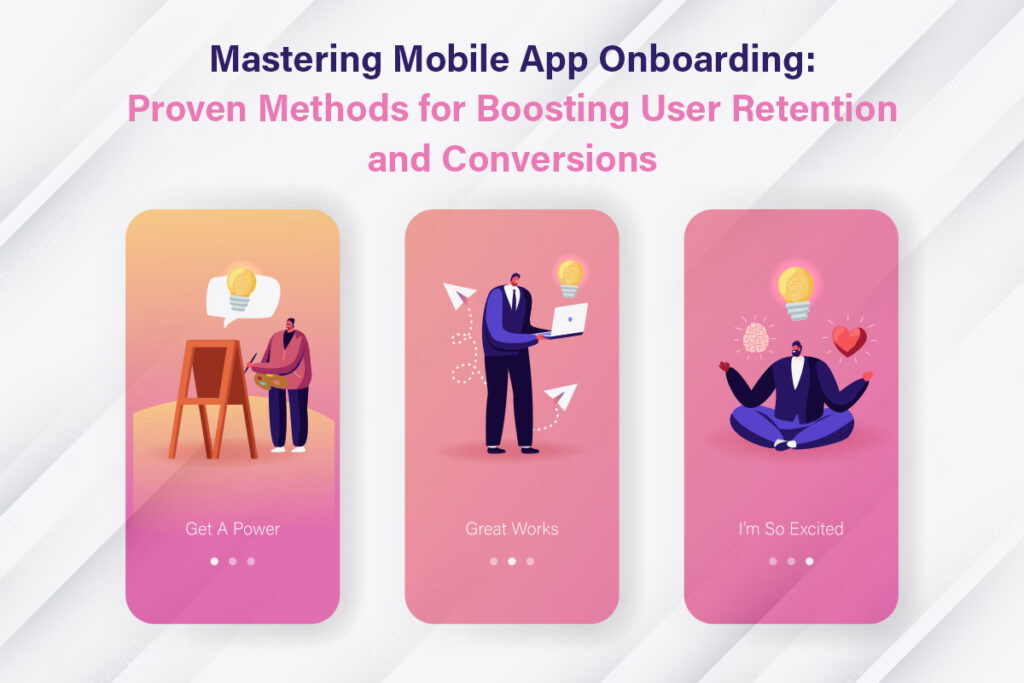
Boost User Retention & Conversions with Mobile App Onboarding: Proven Methods
Mobile app marketing is an essential component of launching and promoting your app. However, once you have successfully acquired new users, the next step is to focus on user retention and conversions. Mobile app onboarding is an effective way to ensure that your users remain engaged with your app and continue to use it over time. In this article, we will explore some proven methods for boosting user retention and conversions through mobile app onboarding.
What is Mobile App Onboarding?
Mobile app onboarding is the process of introducing new users to your app and providing them with the necessary information and guidance to start using it effectively. The goal of onboarding is to create a positive user experience and encourage users to continue using your app. Effective onboarding can lead to higher retention rates, increased engagement, and improved conversion rates.
Proven Methods for Mobile App Onboarding
Keep it Simple
One of the most important aspects of effective onboarding is to keep it simple. Users should be able to understand the key features and benefits of your app quickly and easily. Avoid overwhelming users with too much information or complex tutorials. Instead, focus on providing a clear and concise introduction to your app’s functionality.
Use Visuals
Visual aids can be a powerful way to convey information and improve user engagement. Consider using images, videos, and animations to explain your app’s features and functionality. Visuals can be especially helpful for demonstrating complex features or processes.
Personalize the Experience
Personalization is a key component of effective mobile app marketing. Users are more likely to engage with an app that feels personalized to their needs and preferences. Consider using user data to customize the onboarding experience for each user. This could include tailored messages, personalized recommendations, or customized settings.
Provide Incentives
Incentives can be a powerful way to encourage users to engage with your app and continue using it over time. Consider offering rewards or bonuses for completing specific tasks or achieving certain milestones. This could include discounts, free trials, or exclusive access to premium features.
Use Gamification
Gamification is the process of incorporating game-like elements into non-game contexts. In the context of mobile app onboarding, this could include using badges, points, or other rewards to incentivize users to engage with your app. Gamification can make the onboarding process more enjoyable and help users feel more invested in your app.
Provide Support
Effective onboarding should also include support options to help users troubleshoot any issues or questions they may have. This could include in-app support chat, email support, or a knowledge base. Providing support options can help users feel more confident and comfortable using your app.
Test and Iterate
Mobile app marketing is an iterative process. Once you have launched your app, it’s essential to continue testing and iterating your onboarding process to ensure that it remains effective over time. Consider using A/B testing or user feedback to identify areas for improvement and refine your onboarding process accordingly.
In addition to the above methods, there are some other best practices you can consider when designing your mobile app onboarding process. These include:
Keep the Sign-Up Process Simple
The sign-up process is often the first interaction users have with your app. It’s important to keep it simple and easy to complete. Avoid asking for too much information upfront, and consider offering social media sign-in options to streamline the process.
Focus on Value Proposition
The value proposition is what sets your app apart from competitors and provides a compelling reason for users to continue using it. Your onboarding process should highlight your app’s value proposition and communicate how it can help users solve specific problems or achieve specific goals.
Use Push Notifications Wisely
Push notifications can be a powerful way to engage users and encourage them to return to your app. However, it’s important to use them wisely to avoid overwhelming users with irrelevant or excessive notifications. Consider using segmentation and targeting to send personalized and relevant notifications to each user.
Optimize for Different Devices and Platforms
Mobile app onboarding should be optimized for different devices and platforms. Ensure that your onboarding process is responsive and works seamlessly on different screen sizes and operating systems. This can help to improve user engagement and reduce churn rates.
Monitor and Analyze User Behavior
Finally, it’s important to monitor and analyze user behavior to identify areas for improvement and optimize your onboarding process over time. Use analytics tools to track user engagement, retention, and conversion rates, and use this data to identify trends and opportunities for optimization.
Conclusion
In conclusion, mobile app onboarding is a critical component of mobile app marketing that can help boost user retention and conversions. By following these proven methods and best practices, you can create an effective onboarding process that encourages users to engage with your app and continue using it over time. Remember to keep it simple, use visuals, personalize the experience, provide incentives, use gamification, provide support, and test and iterate. By doing so, you can build a successful mobile app that users will love and continue to use over time.
Please feel free to Contact Us in case you need any guidance regarding your app marketing needs.




0